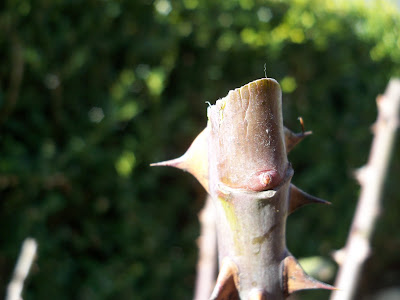
Garlic Chives (Allium tuberosum)
As of yesterday, this is how my garlic chives looked like. They were planted maybe three or four years ago still in the same pot. They are ready to be divided but I have been delinquent. Anyway, it looks very good at the moment.
Garlic chives are different from the common chives (Allium schoenoprasum) by appearance and flavor. Sometimes they are referred to as Chinese chives or flat chives but in Ilocano (my dialect) they are called Kutchay. Unlike the chives, kutchay has a strong garlicky flavor which is an important material in my partly-Asian kitchen. It is good in fried rice, omelets, soups, meats, and noodles. The leaves as well as the young flowers make a good substitute for leeks, green onions, and sometimes cooked by it self.
Garlic chive is a perennial plant that is easy to grow. I prefer to start with seedlings purchased local nurseries. Once established, it will continue to spread and comes back year after year. In fact it is a self-seeding plant thus can become a weed if flowers are not cut off before the seeds get dispersed naturally. I like to harvest them as needed starting from one end of the row or one side of the pot and moving on. This way there will always be new leaves to use in the kitchen since regular cutting or harvesting encourages new growth and even spreading. To harvest, cut the leaves 1-2 inches from the base.
Annual application of compost early in spring will provide the needed nutrients. When grown in pots, apply complete or nitrogen fertilizer at a very low rate to replace the nutrients that get washed off during watering.
Divide and replant when the plants get to crowded (maybe every three to five years).
Important definition:
Self-seeding plants. (n.) plants with seeds that spread their seeds naturally and without special attention given, the seeds will grow.
Start a kitchen garden...plant herbs.






















